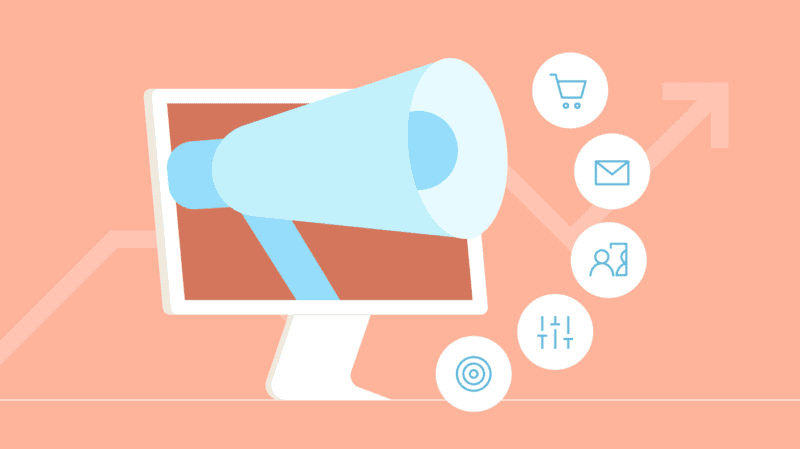Is Your CX stack Smart Enough for the Omnichannel World?

Customer experience (CX) is the new battleground for practically all industries, and central to winning the battle for the customer’s loyalty is the ability to understand their needs and changing preferences. To produce a better overall customer experience, brands need to realize it’s more than just adding a live chat feature for conversational support or increasing the production of content that be placed on their social media feed. This challenge is intensified in our complex omnichannel world, where the sheer pace and volume of change have forced executives to find new business models and customer experience management tools that can help them survive and thrive in their industry. These models need to not just meet current customer expectations, but also be responsive enough to their constantly evolving needs and preferences.
Data has emerged as one of the keys to better understanding the customer and can empower businesses to deliver great customer experiences. Over recent years, enterprises that recognize this and acknowledge the business value of loyal customer satisfaction, have already invested significantly in foundational and operational technology – from data lakes and warehouses for data unification, to best-of-breed point solutions for smarter last-mile campaign delivery – with the goal of delivering better experiences. Unfortunately, many are finding that despite the investments, they are still not seeing the CX outcomes hoped for. So, what is stopping these well-intentioned brands from winning with exceptional CX?
Several research studies suggest that even enterprises with the strongest CX intent are often limited by their understanding of customer behavior across channels – a problem that Forrester calls the number 1 challenge for enterprise CX teams. Seen in a unidimensional way, this could come across as a marketing problem. But the challenge runs much deeper and wider than that. It is, in fact, a true ‘organizational challenge’, and in practical terms, it means that the operating model for the enterprise is not able to evolve as quickly as consumer expectations are. Developing a customer-centric approach on how to engage with your customers and measure their reactions is essential.
Today, as this McKinsey paper reinforces, businesses are recognizing that to walk the CX talk over the long haul needs a holistic approach where CX is built right into the enterprise’s operating model.
A new approach to CX leadership
To get to the level of centralization and orchestration needed for winning CX delivery, business leaders have tried different approaches, mainly led by changes to their technology stack. Common approaches have included developing central systems in-house or consolidating technology around an experience or marketing cloud. Most have not seen the result they were expecting, either in terms of keeping pace with customer expectations or delivering seamless experiences across channels. Gartner’s 2019 Marketing Technology Survey found, for example, that only 27% of marketers who took an integrated suite approach to manage their tech stack found it to be effective. Similarly, this Mailjet survey found that marketers claim to lose 13.8 hours per week in productivity, thanks to homemade technology. This is because such solutions while doing an admirable job of certain capabilities such as data storage and campaign delivery, are incapable of handling the sheer speed, scale, and complexity of change that comes with CX territory. They are also incapable of true integration, severely constraining both – data access and data activation – for diverse touchpoints. The result, despite the intent to the contrary, is siloed data, siloed intelligence, and ultimately, a disjointed customer experience.
So, what is the optimal way to make this transformational change at an enterprise level without reinventing everything that has been assembled so far?
The first step to achieve this unified, synchronized effort towards delivering customer experiences is to get rid of organizational silos which remain a persistent challenge even for mature organizations and unify teams (collaboration), processes (orchestration), and technology (integration).
Second, it needs an intelligent core, or what is being increasingly referred to as a ‘smart hub’, which centralizes the data and decisions; and enables both people and processes to put this data into motion across any existing and new systems and channels.
Finally, the approach needs to be scalable, cost-effective, and responsive to change without requiring major architectural changes to existing systems.
How ‘smart hubs’ are enabling- and accelerating – the path to optimal CX delivery
A modern CX stack powered by a smart hub – typically an advanced CDP solution – satisfies all these three criteria and is quickly proving to be the preferred approach of CX leaders across industries. For instance, ELF Cosmetics in CPG, American Eagle in Retail, and The New York Times in media are all outperforming their category due to their customer-first operating model, enabled by a smart hub. Studying the operating models of such industry leaders, we observe that the ability to keep pace with, understand, and respond to changing consumer behavior across all channels is built right into the enterprise’s operating model. And to do this, they didn’t just transform their technology, but the entire organizational structure. Even as executives put the customer at the center of the organizational vision, the smart hub enables execution of that vision with a change-resilient approach, wrapping people, processes, and technology around the modern CX stack to deliver winning experiences at speed and scale.
These powerful ‘smart hub CDPs’ are, by definition, able to provide advanced capabilities such as data unification, data analytics, and data activation, across the CX spectrum, seamlessly integrated into a single platform. They also provide a self-service UI to allow non-technical business users to easily access and act upon the analysis and insights. Finally, a smart hub CDP must be not just fully integrated within itself but must also be able to easily integrate with all upstream and downstream systems in the current or future tech stack but gives you the visibility to execute your customer experience strategy.
Brands such as Zoom, Netflix, and Airbnb have proved that taking a legacy product or service and wrapping a completely redesigned customer experience around it can create major market disruptions. In multiple research studies, looking at customer feedback via a positive CSAT score – which has emerged as a reliable barometer of CX success – has proved to be correlated to higher shareholder value and business profitability.
If you are on the path to CX leadership, a smart hub CDP may just be the optimal and fastest time-to-value route to achieve the CX outcomes your customers and shareholders expect and will continue to demand. Contact us to see if ActionIQ is what you’ve been hoping for.





